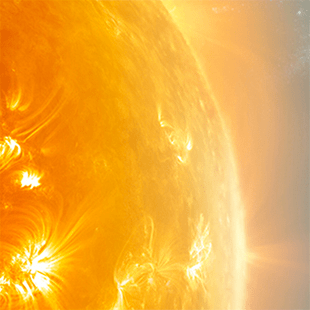Planetary Science Standards Alignments
Planetary Science Standards Alignments
Grouped by Disciplines
Printer Friendly: Planetary Science Standards Alignments (PDF)
Earth and Space Science | ||
Grade | Standard | NGSS PE (link) |
|---|---|---|
1 | Use observations of the sun, moon, and stars to describe patterns that can be predicted. | |
1 | Make observations at different times of year to relate the amount of daylight to the time of year. | |
5 | Represent data in graphical displays to reveal patterns of daily changes in length and direction of shadows, day and night, and the seasonal appearance of some stars in the night sky. | |
Middle School | Develop and use a model of the Earth-sun-moon system to describe the cyclic patterns of lunar phases, eclipses of the sun and moon, and seasons. | |
Middle School | Develop and use a model to describe the role of gravity in the motions within galaxies and the solar system. | |
Middle School | Analyze and interpret data to determine scale properties of objects in the solar system. | |
Middle School | Construct a scientific explanation based on evidence from rock strata for how the geologic time scale is used to organize Earth's 4.6-billion-year-old history. | |
Middle School | Construct an explanation based on evidence for how geoscience processes have changed Earth's surface at varying time and spatial scales. | |
High School | Use mathematical or computational representations to predict the motion of orbiting objects in the solar system. | |
High School | Apply scientific reasoning and evidence from ancient Earth materials, meteorites, and other planetary surfaces to construct an account of Earth’s formation and early history. | |
High School | Use a model to describe how variations in the flow of energy into and out of Earth’s systems result in changes in climate. |
Physical Science | ||
Grade | Standard | NGSS PE (link) |
|---|---|---|
1 | Make observations to construct an evidence-based account that objects in darkness can be seen only when illuminated. | |
4 | Make observations to provide evidence that energy can be transferred from place to place by sound, light, heat, and electric currents. | |
5 | Support an argument that the gravitational force exerted by Earth on objects is directed down. | |
Middle School | Apply Newton’s Third Law to design a solution to a problem involving the motion of two colliding objects. | |
Middle School | Construct and present arguments using evidence to support the claim that gravitational interactions are attractive and depend on the masses of interacting objects. | |
Middle School | Integrate qualitative scientific and technical information to support the claim that digitized signals are a more reliable way to encode and transmit information than analog signals. | |
High School | Apply science and engineering ideas to design, evaluate, and refine a device that minimizes the force on a macroscopic object during a collision. | |
High School | Use mathematical representations of Newton’s Law of Gravitation and Coulomb’s Law to describe and predict the gravitational and electrostatic forces between objects. |






























